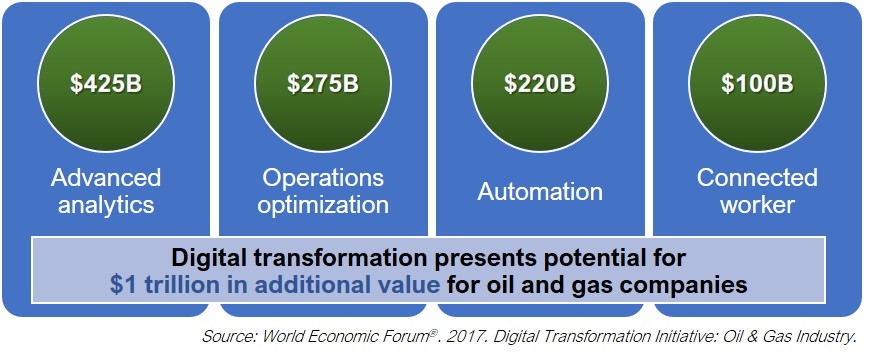Oil and gas visionaries started raising the idea of digital oilfields in the early 2000s. The focus of this new concept was to capitalize on the digital revolution by automating oil and gas exploration, well construction, and production. By automating and integrating workflows with powerful, edge computing directly in the field, these “digital oilfields” could deliver highly coveted benefits that were more than just useful. They were transformative.
In short, this shift would deliver a trifecta of informational, operational, and financial advantages. By relocating the compute technology from a centralized office directly into the field, embedded, AI-enabled automation would be able to capture, analyze, and act upon critical operating data—from drilling parameters and hydraulic fracking applications to downtime and pressure readings—in real time. In addition, information from multiple field locations could be consolidated by the company network to track and generate useful trend data for use by multiple users, departments, and locations. Having access to consistent data, improves awareness and alignment and ensures effective process refinements, as well as enables predictive modeling and preventative maintenance.

For processes and productivity, employing intelligent automation would drive reliable, repeatable performance in field operations. Executing standardized processes and workflows with consistency and precision would keep operations moving without interruption for consistent, predictable results.
AI algorithms would also improve operating efficiency with greater accuracy by recognizing and adapting to shifting conditions without human intervention. With fewer people needed to facilitate operations, opportunities to minimize errors, improve quality and reduce overhead would increase dramatically. Likewise, safety and health risks would be significantly reduced with fewer people needed to conduct the most dangerous aspects of field work.
Introducing this level of automation might spark fears of job loss, but staffing would be critical to implement a transformation of this magnitude, especially for different roles and skill sets, such as data analytics, change management, and communication.
By streamlining operations and information transmission, up-time is maximized, and production costs are lowered, leading to increased profitability. Paired with consistent productivity and reliable performance, digital oil fields collectively deliver increased margins and better earnings, making it a win-win for shareowners and employees.
Watch for part 3 in the series to learn what’s been holding oil and gas leaders from making the transition to digital oilfields and reaping such lucrative benefits.